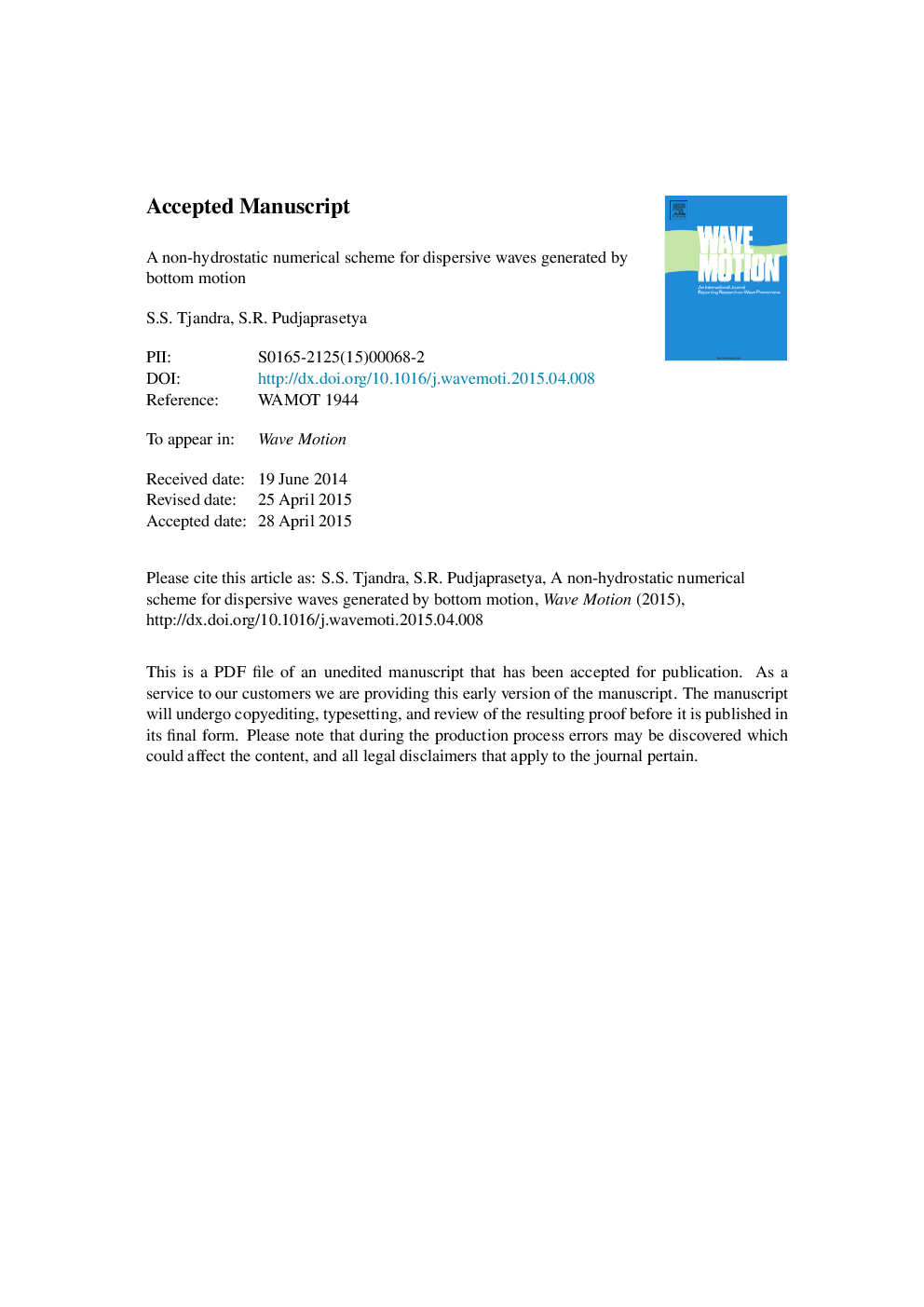| Article ID | Journal | Published Year | Pages | File Type |
|---|---|---|---|---|
| 8257063 | Wave Motion | 2015 | 23 Pages |
Abstract
A numerical scheme based on the staggered finite volume method is presented at the aim of studying surface waves generated by a bottom motion. We address the 2D Euler equations in which the vertical domain is resolved only by one layer. The resulting non-hydrostatic scheme is used to simulate surface waves generated by bottom motion in a water tank. Here we mimic Hammack experiments numerically, in which a bed section is moved upwards or downwards, resulting in transient dispersive waves. For an impulsive downward bottom thrust, free surface responds in terms of a negative leading wave, followed with dispersive train of waves. For an upward bottom thrust, amplitude of the leading wave decays as the wave propagates, and no wave of permanent form evolves- instead, there appears a train of solitons. In this article, we show that our numerical scheme can produce the correct wave profiles, comparable with the analytical and experimental results of Hammack. Simulations using intermediate and slow bottom motions are also presented. In addition, we perform a simulation of a wave generated by submerged landslide, that compares well against previous numerical simulations. Via this simulation, we demonstrate that our scheme can incorporate a moving wet-dry boundary algorithm in the run-up simulation.
Keywords
Related Topics
Physical Sciences and Engineering
Earth and Planetary Sciences
Geology
Authors
S.S. Tjandra, S.R. Pudjaprasetya,
